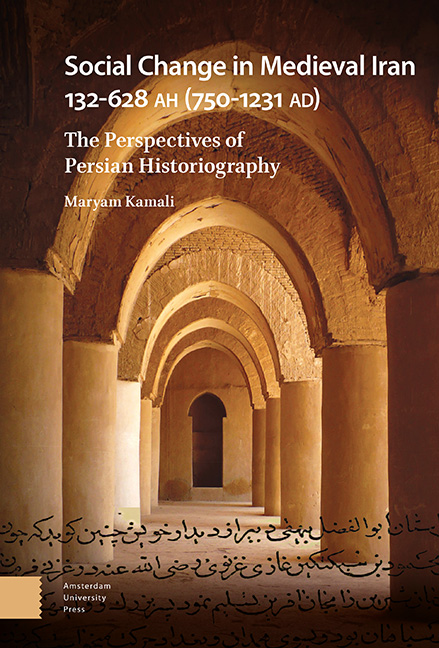Book contents
Summary
Social change in post-Islamic Iran was tied to the formation of the ʿAbbāsid Caliphate. The ʿAbbāsid ploy to exploit dissident agents and mobilize them against the Umayyad Caliphate led to the formation of various social groups. Aware of their historic opportunity to bring about social change, the ʿAbbāsids took full advantage of their potential. The use of tools such as daʿva, which had a long history in Islamic history, exploiting Shiʿite structural resources such as the imamate, and identifying Khorāsān as a suitable place to start daʿva, was part of the ʿAbbāsid plan to gain religious legitimacy among the people.
The Iranians, who had not forgotten the memory of their glorious pre- Islamic history and looked to reproduce those structures in order to gain independence, came to the scene with all their strength. The presence of many of them as dāʿies, including Abu Salama Khallāl and great commanders such as Abu Moslem-e Khorāsāni, eventually led to the fall of the Umayyad Caliphate. The ʿAbbāsid Caliphate can be considered a reproduction of the Umayyad Caliphate, which tried to rule with the same monopolistic power. Although the ʿAbbāsids used various structural resources and agents to gain power, they chanted only negative slogans during the invitation and did not promise to make fundamental changes.
But ʿAbbāsid efforts to overthrow the Umayyads had brought new agents to the scene who never intended to give up their share against the ʿAbbāsid Caliphate. The Shiʿites, who saw the ʿAbbāsids indebted to their structural resources for recruiting dissidents, renewed their rebellious activity more strongly than before. The ʿAbbāsids were aware that the Shiʿites were not looking for a share of the power, but to possess all of it; therefore, the ʿAbbāsid Caliphate tried to subdue the Shiʿites with a policy of repression. But, the power structures of the ʿAlawites became more cohesive and stable with the physical elimination of their agents. Eventually, Maʾmun, who saw that the policy of repression was unsuccessful, complied with the Shiʿites’ demands and, by electing ʿAli ibn Musā as the crown prince, took a different approach to dealing with them.
- Type
- Chapter
- Information
- Social Change in Medieval Iran 132-628 AH (750-1231 AD)The Perspectives of Persian Historiography, pp. 255 - 262Publisher: Amsterdam University PressPrint publication year: 2023



